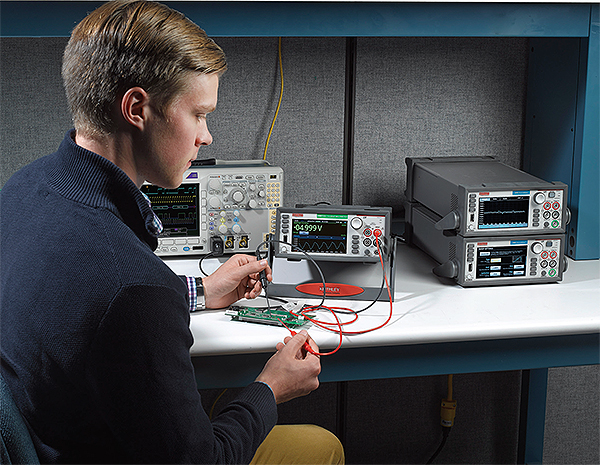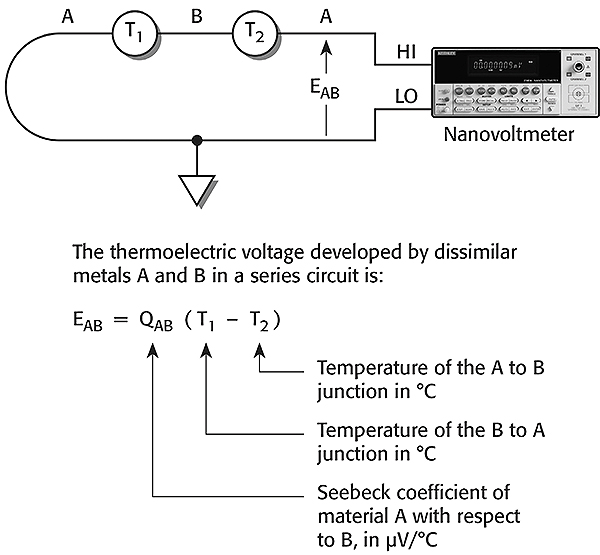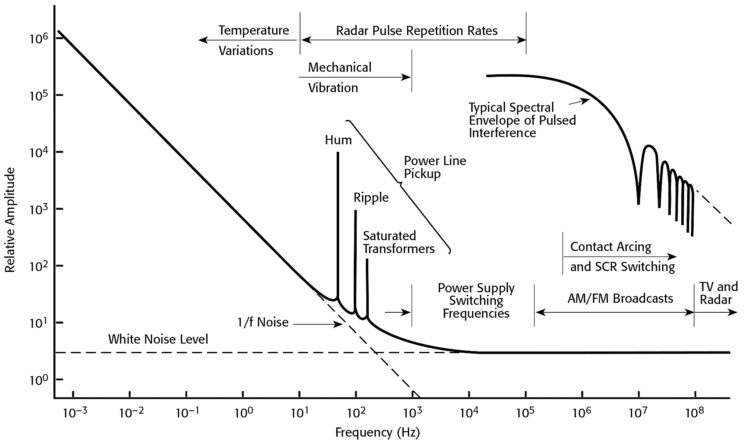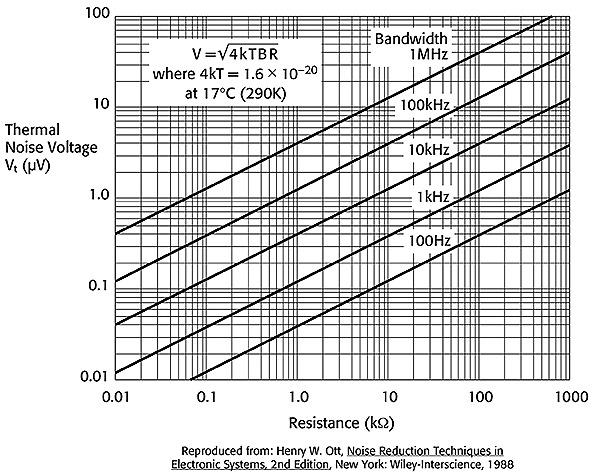Edited by Miles Budimir
Subtle difficulties can plague tests involving low voltages. Here are the biggest culprits and surefire ways to avoid them.
Signal levels in state-of-the-art electronics have become diminishingly small. For example, ultra-low-voltage digital designs in CMOS now operate with minimum supply voltages in the 200-mV range. This trend has put a new emphasis on accuracy in measurements of nano- and picoamp currents and micro- and nanovolt voltages.
Measurements at these extremely low levels are subject to error sources that engineers usually ignore when working with more traditional logic and IC technologies. So it can be useful to review the main difficulties that arise when working with circuitry handling signals that would have been in the noise levels of most electronics fielded just a few decades ago.

Thermoelectric EMF
Thermoelectric voltages (or thermoelectric EMFs) are the most common sources of errors in low-voltage measurements. These voltages arise when different parts of a circuit are at different temperatures and when conductors made of dissimilar materials join together. Temperature differentials in the test circuit, caused either by fluctuating temperatures in the lab or by a draft near the test circuit, can generate a few microvolts.
How to deal with these EMFs? Several ways. First, construction of circuits using the same material for all conductors minimizes thermoelectric EMF generation. Connections should also be kept clean and free of oxides.

Another helpful tip is to minimize temperature gradients within the test circuit. For instance, place corresponding pairs of junctions close to one another and provide good thermal coupling to a common heat sink.
Also, allow test equipment to warm up and reach thermal equilibrium in a constant ambient temperature. To keep ambient temperatures constant, keep test equipment away from direct sunlight, exhaust fans, and other sources of heat flow or moving air.
Internal offsets
Nanovoltmeters will rarely indicate zero when no voltage is applied to the input, because there are unavoidable voltage offsets present in the input of the instrument. A short circuit can be connected across the input terminals and the output can then be set to zero, either by front panel zero controls or by computer control. If the short circuit has extremely low EMF, this zeroing can be used to verify input noise and zero drift with time. Clean, pure copper wire will usually be suitable. However, the zero established in this way is useful for verification purposes and is of no value in the end application of the instrument.
Zero drift
Zero drift is a change in the meter reading with no input signal (measured with the input shorted) over a period of time. The zero drift of an instrument is almost entirely determined by the input stage. Most nanovoltmeters use some form of chopping or modulation of the input signal to minimize the drift.
The zero reading may also vary as the ambient temperature changes. This effect is usually referred to as the temperature coefficient of the voltage offset.
An instrument may also display a transient temperature effect. After a step change in the ambient temperature, the voltage offset may change by a relatively large amount, possibly exceeding the published specifications. The offset will then gradually decrease and eventually settle to a value close to the original value.
Again, to minimize voltage offsets due to ambient temperature changes in junctions, make measurements in a temperature-controlled environment and/or slow down temperature changes by thermally shielding the circuit.
RFI/EMI
RFI (radio frequency interference) and EMI (electromagnetic interference) are general terms used to describe electromagnetic interference over a wide range of frequencies across the spectrum. RFI or EMI can be caused by sources such as TV or radio broadcast signals or it can be caused by impulse sources, as in the case of high-voltage arcing. In either case, the effects on the measurement can be considerable if enough of the unwanted signal is present.

RFI/EMI interference may manifest itself as a steady reading offset or it may result in noise or erratic readings. A reading offset may be caused by input amplifier overload or dc rectification at the input.
RFI and EMI can be minimized by taking several precautions when making sensitive measurements. The most obvious precaution is to keep all instruments, cables, and DUTs as far from the interference source as possible. Shielding the test leads and the DUT will often reduce interference effects to an acceptable level. In extreme cases, a specially constructed screen room may be necessary to attenuate the noise signal sufficiently.
Johnson noise
The ultimate limit of resolution in an electrical measurement is defined by Johnson or thermal noise. This noise is the voltage associated with the motion of electrons due to their thermal energy at temperatures above absolute zero. All voltage sources have internal resistance, so all voltage sources develop Johnson noise.
This voltage is related to the temperature, noise bandwidth, and the source resistance. The noise voltage developed by metallic resistance can be calculated from the following equation:

where:
V = rms noise voltage developed in source resistance, in volts;
k = Boltzmann’s constant (1.38 x 10-23 joule/K);
T = absolute temperature of the source, kelvin;
B = noise bandwidth, hertz;
R = resistance of the source, ohms
Johnson noise can be reduced by lowering the temperature of the source resistance and reducing the bandwidth of the measurement. Cooling the sample from room temperature (290K) to liquid nitrogen temperature (77K) cuts the voltage noise by approximately a factor of two.

1/f noise
In contrast with Johnson noise or white noise, the spectral density of 1/f noise varies inversely with frequency. Although 1/f noise is present in all electronic devices, it’s most often associated with carbon-composition resistors and semiconductor devices. Because 1/f noise is at a maximum at low frequencies, this type of noise may seriously affect low voltage measurements.
Line cycle interference and line cycle integration
The most common form of external noise is 50 or 60-Hz line cycle noise. This interference is a noise signal that may be coupled to the test signal from other instruments in the measurement system or other electrical equipment. This noise, superimposed on the dc signal being measured, can result in highly inaccurate and fluctuating measurements. For instance, millivolts of noise can be a common occurrence near fluorescent lights.
To minimize the effects of 50 or 60-Hz line pickup, use line cycle integration. Line-cycle noise will average out when the measuring instrument’s integration time is equal to an integral number of power line cycles. By integrating over one power line cycle, the positive and negative noise contributions cancel each other out, and the ac component of the signal averages to zero leaving only the dc component to be measured. By default, most instruments will use integration of one line cycle (1 PLC). However, this parameter is often user-defined to improve measurement accuracy, if needed.
Magnetic fields
Magnetic fields generate error voltages in two circumstances: 1) if the field is changing with time and 2) if there is relative motion between the circuit and the field. Voltages in conductors can be generated from the motion of a conductor in a magnetic field, from local ac currents caused by components in the test system, or from the deliberate ramping of the magnetic field, such as for magneto-resistance measurements. Even the earth’s relatively weak magnetic field can generate nanovolt levels in dangling leads, so leads should be kept short and rigidly tied down.
Magnetic equations of basic physics show that the amount of voltage a magnetic field induces in a circuit is proportional to the area the circuit leads enclose and the rate of change in magnetic flux density. The induced voltage is calculated using the equation:

where: V = induced voltage; A = loop area; B = magnetic flux density; Φ = magnetic flux.
Because the induced voltage is proportional both to the magnitude of A and B as well as to the rate of change, the best way to minimize induced voltage is to keep both A and B to a minimum by reducing loop area.
Also consider that when leads are twisted together, induced voltage is considerably reduced. Conductors that carry large currents should also be shielded or run as twisted pairs to avoid generating magnetic fields that can effect nearby circuits.
Ground loops
One of the most notorious sources of noise and error voltage is the ground loop. When there are two connections to earth, such as when the source and measuring instruments both connect to a common ground bus, a loop forms. A voltage (Vg) between the source and instrument grounds will cause a current (I) to flow around the loop. This current will create an unwanted voltage in series with the source voltage.
From Ohm’s Law:
Vg = I x R
where:
Vg = ground loop interfering voltage;
R = the resistance (ohms) in the signal path through which the ground loop current flows;
I = the ground loop current, A.
A typical example of a ground loop is when a number of instruments are plugged into power strips on different instrument racks. Frequently, there is a small difference in potential between the ground points. This potential difference can cause large currents to circulate and create unexpected voltage drops.
The cure for such ground loops is to ground all equipment at a single point. The easiest way of doing this is to use isolated power sources and instruments, then find a single, good earth-ground point for the entire system. Avoid connecting sensitive instruments to the same ground systems used by other instruments, machinery, or other high-power equipment.
Finally, accuracy in measurements of low-level signals involves common sense. Start by eliminating the noise source. Removing the source of noise eliminates the need for dealing with the noise in the first place. Also, don’t forget shielding. Suffice to say that observing proper shielding techniques will greatly cut noise levels. Lastly, incorporate filters. Use filters either on their own or in combination with other noise-reducing methods.
REFERENCES:
Information courtesy of Keithley Instruments, a Tektronix company.
www.tek.com/keithley

Leave a Reply
You must be logged in to post a comment.